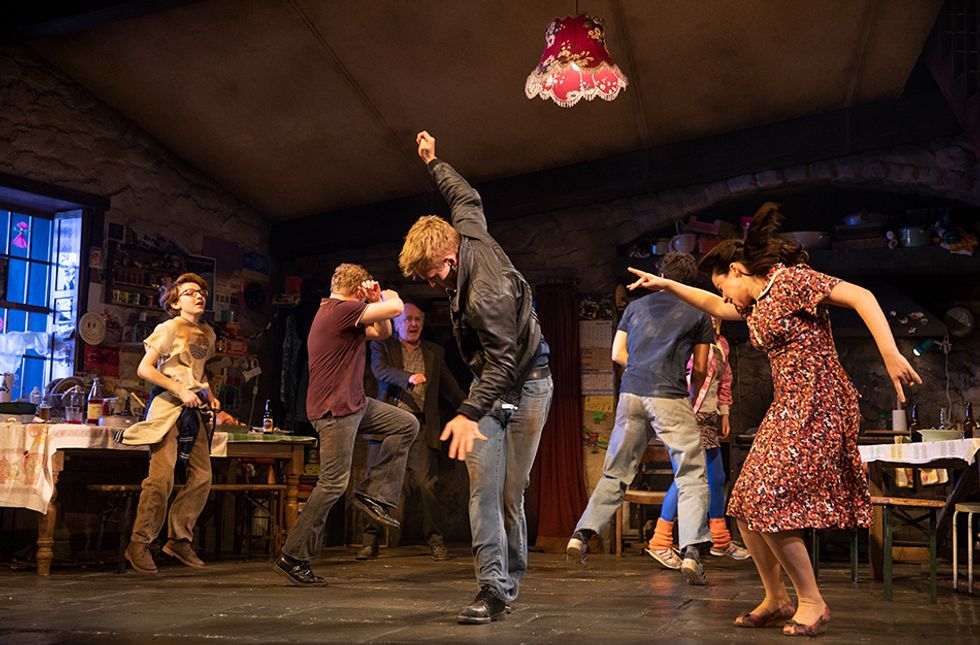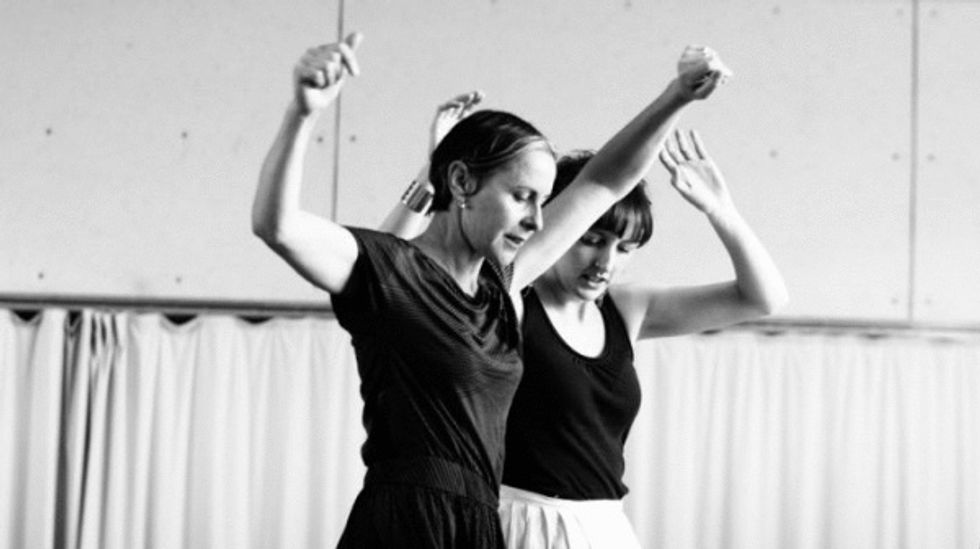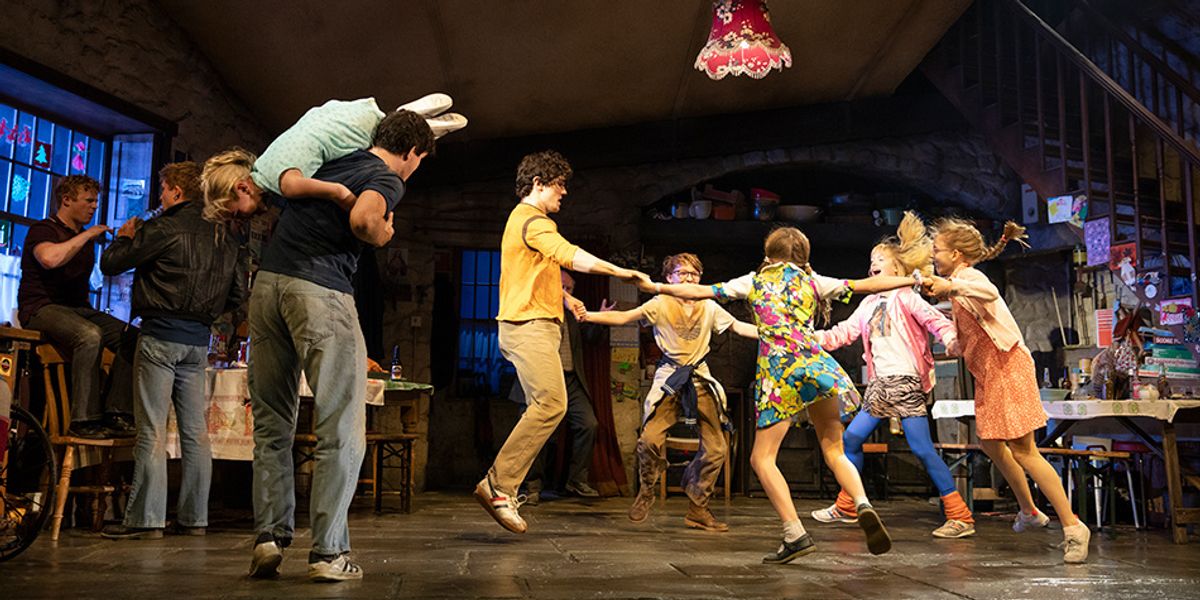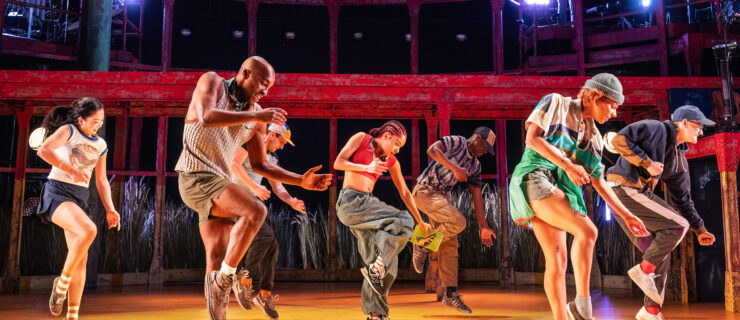How The Ferryman's Choreography "Shifts the World on Its Axis"
Some of the most vibrant dancing on Broadway this season can be seen in a dark, heart-wrenching drama about a farm family in Northern Ireland during the Troubles, when violent clashes between Protestants and Catholics turned cities into war zones and jails into political arenas. But Scarlett Mackmin says that when she signed on as choreographer for the original 2017 London production of Jez Butterworth’s The Ferryman, it didn’t seem there would be very much for her to do.
Your browser does not support the video tag.
The play, recently extended at the Bernard B. Jacobs Theatre, opens on a couple playing cards in a large rustic kitchen, and, with the Rolling Stones on the boombox, they have a bit of a dance. As the rest of the family drifts in for breakfast, we learn it’s going to be a big day for the Carneys: Joined by cousins from the city, they’ll be bringing in the barley, then celebrating with their traditional Harvest Feast of roast goose. And, of course, some music and dance.

The company of The Ferryman. Photo by Joan Marcus, Courtesy Boneau/Bryan-Brown
The Ferryman
becomes much more than harvest day on Quinn Carney’s farm, though, as the stories of several generations are woven into a rich tapestry that encompasses politics, murder, adultery and the whole of Irish history. As they worked on it, Mackmin says, director Sam Mendes realized that “the play needed a shifting moment,” and the Harvest Feast dance became that moment. It starts out with traditional Irish clogging and ends up in a frenzy of rock moves to “Teenage Kicks” by the Irish punk band The Undertones, revealing the complex relationships among its characters and forcing Carney’s wife and sister-in-law to opposite sides of the stage. “It shifts the world on its axis,” says Mackmin, “and I kept saying to the actors, ‘I don’t mind how you dance, as long as the intention is there and the storyline is being told.’ You see the whole status of the family tumbling and tumbling and tumbling.”
It took a long time to work it out, she says, “because it was a new play, and there’s always tension doing a new play. It’s like writing, being a choreographer…The actors have to feel relaxed enough to go with you on that journey, and allow you to edit. Some are more open to that than others.” But when the cast reassembled for the move to New York, she says, “It was a joy.”

Scarlett Mackmin in rehearsal for The National Theatre’s 2013 production of Liolà. Photo by Catherine Ashmore, via BroadwayWorld.com
She never set out to work with actors rather than dancers. Growing up “in the middle of nowhere”—Aylesham, in Norfolk—she attended the local dance academy, did a stint in New York studying at the Martha Graham School, and then went back to England to finish her training at the Trinity Laban Conservatoire of Music and Dance in London. Her early choreography credits were fairly typical, but her career took a turn when her sister, the theater director Anna Mackmin, hired her to choreograph steps for an elderly woman and a plus-size man. Many plays followed, for famed British directors like Mendes, Richard Eyre, Michael Grandage and Nicholas Hytner. And these days, she’s also working directly for actors, helping them “use physical transformation to help their characters, as opposed to just doing dances within plays.”
She’s got several projects coming up, but she can’t talk about them yet. Given her diverse résumé, there could be another play, like Ferryman; or another music video, like the award-winning one she did with Rosamund Pike for Massive Attack; a commercial, like the one she did for Chanel; a television series, like The Crown; or a film, like The King’s Speech, or the more recent A Private War.
In the latter, she says, “You will not see any dancing, and you would not know that anyone had done any physical work.” Rosamund Pike plays the reporter Marie Colvin, who died in 2012 covering the Syrian civil war. Colvin, Mackmin says, “had a very different physicality to Rosamund’s, and we did crazy things to find that—down to the details of how she smoked her cigarette.” Like the other kind of choreography, it’s writing with bodies, and Mackmin says she wants to do more of it.




